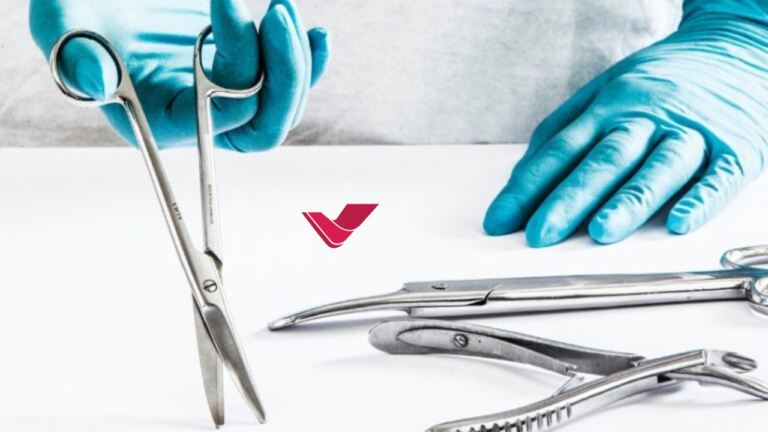Biopsy procedures are crucial in modern medicine, allowing clinicians to obtain tissue samples for diagnostic purposes. A biopsy involves the removal of a small sample of tissue from a specific area of the body to examine it under a microscope. This procedure helps diagnose various medical conditions, including cancer, infections, and inflammatory diseases. The information gathered from biopsies aids healthcare professionals in determining appropriate treatment plans and monitoring disease progression.
Types of Biopsy Procedures
- Excisional Biopsy
An excisional biopsy involves the removal of an entire suspicious area or lesion for examination.
Surgical scalpels, forceps, scissors, and sometimes a cautery device are instruments.
- Incisional Biopsy
In an incisional biopsy, only some suspicious tissue is removed for analysis. Instruments used are Surgical scalpels, forceps, and scissors.
- Punch Biopsy
This technique involves using a circular blade to remove a small cylindrical tissue core. Instruments used are Biopsy punch, forceps, and sometimes a cautery device.
- Needle Biopsy
Needle biopsy uses a thin needle to extract tissue samples deep within the body. Types of needle biopsy include fine-needle aspiration (FNA), core needle biopsy, and vacuum-assisted biopsy. Biopsy needles, syringes, and guidance tools such as ultrasound or CT scans are used.
Instrument Selection for Biopsy Procedures
- Surgical Scalpel
A surgical scalpel is essential for precise incisions during excisional and incisional biopsies. Varieties include disposable and reusable options, with different blade sizes and handle designs available.
- Biopsy Forceps
Biopsy forceps are used to grasp and remove tissue samples during excisional, incisional, and punch biopsies. They come in various sizes and configurations, including straight and angled jaws.
- Biopsy Punch
Biopsy punches are specialized instruments used to remove cylindrical tissue samples in punch biopsies.
Available in different diameters to accommodate various tissue sizes.
- Biopsy Needle
Biopsy needles are crucial for biopsy procedures, allowing for the extraction of tissue samples deep within the body. Types include fine-needle aspiration (FNA), core biopsy needles, and vacuum-assisted biopsy devices.
- Guidance Tools
In needle biopsy procedures, imaging guidance tools such as ultrasound, CT scan, or MRI may precisely locate and target the biopsy site.
Best Practices In Biopsy Procedures
- Patient Preparation:
- Adequate patient education and consent are essential. Always discuss the procedure, risks, and benefits to the patient.
- Ensure the patient’s medical history, allergies, and medications are reviewed.
- Follow fasting or other pre-procedure instructions if necessary.
- Sterile Technique:
- To minimize infection risk, maintain a strict aseptic technique throughout the procedure.
- Use sterile instruments, gloves, drapes, and other equipment.
- Procedural Skill and Precision:
- Perform biopsies with precision to obtain adequate tissue samples for accurate diagnosis.
- Take care to avoid damaging surrounding structures and organs.
- Communication and Collaboration:
- Effective communication among healthcare team members is crucial for seamless coordination during biopsy procedures.
- Pathologists, radiologists, and other specialists may be involved in different aspects of the biopsy process.
- Post-procedure Care:
- Provide appropriate post-procedure care instructions to the patient, including wound care and activity restrictions.
- Monitor for any signs of complications such as bleeding, infection, or allergic reactions.
Biopsy Procedure: What To Expect And Aftercare
During Biopsy Procedure
During a biopsy procedure, the patient will be positioned appropriately depending on the type and location of the biopsy. Local anesthesia is commonly applied to numb the area. The healthcare provider uses specialized instruments to obtain tissue samples, following the chosen biopsy technique.
The patient may feel pressure or mild discomfort throughout the procedure but should not experience pain. Imaging guidance may be used for certain types of biopsies to ensure precision. After collecting the samples, they are sent to a laboratory for analysis.
After Biopsy Procedure
After the biopsy procedure, the patient may experience temporary discomfort or soreness at the biopsy site. Minor bleeding or bruising is usual, which can be managed with gentle pressure and a sterile dressing. Depending on the type of biopsy and the patient’s condition, they may be monitored briefly before being discharged home. The healthcare provider will provide specific instructions for post-biopsy care, including any restrictions on activities, medication use, and wound care.
The patient needs to follow these instructions carefully to promote healing and minimize the risk of complications. Results from the biopsy analysis may take a few days to several weeks to become available, depending on the complexity of the analysis and the laboratory’s workload. The healthcare provider will discuss the results with the patient and determine the appropriate next steps for treatment or further evaluation, if necessary.
Last words
Biopsy procedures require careful consideration of instrument selection and adherence to best practices to ensure accurate diagnosis and optimal patient outcomes. By understanding the different types of biopsies and the instruments used in each procedure, healthcare professionals can perform biopsies safely and effectively.
It is crucial always to buy biopsy instruments from reputable vendors and thoroughly check the quality of the instruments. Wrangler Surgical Instruments is a trusted provider offering the best biopsy instruments, ensuring reliability and precision in every procedure.


